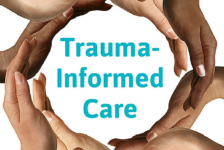Measuring well-being in rural communities
Emma Nalin, Project Coordinator
Rural Health Network, South Central New York
At a recent meeting of the Advisory Committee for Rural Health Network of SCNY’s Social Determinants Measurement Project, we discussed measuring health, well-being, and viability at the community level. What does a rural community need to thrive? What specific indicators can we measure? How useful are existing frameworks in a rural context? These questions feel particularly important as rural communities work to rebuild from the COVID-19 pandemic.
To get started, here are three examples of measuring community well-being from the fields of economic development, disaster relief, and community nonprofits.
- The WealthWorks framework sorts community resources into eight types of “capital.” This economic development strategy begins by measuring a community’s existing assets and then works to match them with market opportunities, prioritizing the inclusion and benefit of low-income residents. Looking at community wellbeing through the lens of eight capitals was central to the RHN-led Tioga Tells quality of life assessment, completed in 2019.
- For more granular measurements, a FEMA workgroup released a concept paper describing specific indicators of disaster preparedness. The indicators FEMA identifies as important for resilience against disasters actually align closely with key Social Determinants of Health, including housing quality and affordability, employment opportunity, and transportation infrastructure.
- The United Way has brought attention to ALICE (asset-limited, income-constrained, employed) households as a weathervane for how the community fares. Exploring the six essential areas of the ALICE household budget – housing, childcare and education, food, transportation, health care, and technology – can reveal where community resources support and neglect these households. The 2020 ALICE report for NY State (using pre-pandemic 2018 data) is available here.
In August 2020, the RHN Social Determinants Measurement Project will bring on two interns to work specifically on this issue – updating and identifying new rural viability indicators for rural Broome County.
Rural Health Network of South Central New York is a founding member of NYSARH.
To share your thoughts on this topic or for more information about the Social Determinants Measurement Project, contact Emma Nalin, Project Coordinator, at enalin@rhnscny.org. Look for quarterly updates on this project in the NYSARH newsletter.



